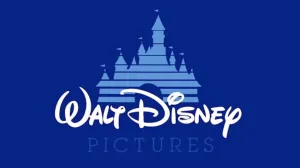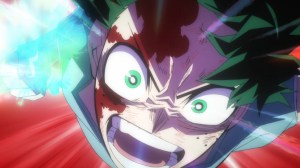
The first trailer for X-Men: Dark Phoenix has led to a lot of different reactions, including some potent excitement for the film’s massive scope and collection of iconic mutants. There have been some grumblings about the movie’s aesthetics as well, but any final judgment will have to be held a bit longer since the movie has already been delayed an additional four months for a new release date on June 7, 2019. That provides all of us with that much more time to dig into the new revelations and twist of each trailer though, including a very big reveal this past week that the island nation of Genosha was part of the first X-Men: Dark Phoenix trailer.
Videos by ComicBook.com
Director Simon Kinberg stated in an interview that fans of the comics were correct in believing that the new locale Magneto was building in the footage was Genosha. He described its place in the film by saying, “It’s like Magneto’s Israel – a land built for mutants, a homeland where they can be safe and self-sufficient.” Moviegoers are likely to be unfamiliar with the name of this new setting or the long history behind it at Marvel Comics though, which is why we are here. If you’re not sure what a Genosha is or why it might matter for X-Men: Dark Phoenix, here’s a brief history from the comics to get you caught up and ready to keep speculating through next June.
Creation
Genosha was created by writer Chris Claremont, during his epic 17-year run as the writer of Uncanny X-Men, and artist Rick Leonardi in 1988. It debuted in Uncanny X-Men #235 in an issue where the X-Men visited the fictional island nation unaware of the many dark secrets it held. Claremont and Leonardi developed Genosha in order to develop allegories between the X-Men and real forms of oppression, specifically nationalized forms of slavery and apartheid in Genosha. Debuting in 1988, the apartheid state garnered many comparisons to South Africa, which was also prominent in American news cycles at the time as Nelson Mandela led the battle against apartheid in the country.

Early History
Genosha is an African nation located on its own island to the north of Madagascar. When the X-Men first visited it, they believed it to be utopian in nature based upon a strong economy and lack of political strife. However, this prosperity was predicated on the mass enslavement of mutants by the state. The Genoshan government carefully monitored its population and used technology to detect any citizens who possessed the mutant gene. Once they identified potential mutants they transformed them into “mutates,” stripping them of free will and sometimes modifying their mutant abilities in order to benefit the Genoshan economy. All mutates became property of the state and were utilized in order to produce wealth for the human population. This system was created and supported by scientist David Moreau, also known as the Genegineer.
When the X-Men came to Genosha, several members of their team were kidnapped to undergo the mutate process under orders of David Moreau. As fans might expect, things did not go according to plan, and the freed X-Men became aware of the terrible crimes being committed in Genosha and managed to stop Moreau and destroy the Genoshan government. Unrest followed as a new government struggled to redeem their nation’s history and undo the wrongs of the past. Magneto and his Acolytes attacked the island, believing that a peaceful transition of power was not possible.
Eventually the United Nations gave the island of Genosha to Magneto in order to meet his demands for a unique state dedicated to the lives of mutant people. Magneto met many challenges when structuring and leading his new government in Genosha, including a civil war with humans and the outbreak of the Legacy Virus. In spite of these struggles, Magneto’s rule was largely successful. He maintained a strong economy and managed to quell any uprisings quickly, leading to the most peaceful period in Genosha since the X-Men first arrived. The island eventually grew to a population of 16 million, with a majority being mutants, and held a prominent place on the world stage.

Destruction and Beyond
This positive trend was brought to a brutal and decisive conclusion in New X-Men #115 at the very start of Grant Morrison and Frank Quitely’s legendary run with the team. The new villain Cassandra Nova used her powers to manufacture a group of Wild Sentinels that destroyed the entire island and killed almost all of its population. Even after Nova was defeated, the X-Men and mutant population could not overcome the act of genocide that transformed Genosha from a land of redemption to a mass graveyard.
Magneto and Professor Xavier did combine their efforts in order to attempt rebuilding the island nation, but were met with great opposition both externally and internally. All efforts to recreate a mutant nation and restore Genosha were brought to an abrupt end by the events of House of M, which ended with the mass destruction of the mutant gene, leaving only about 200 mutants in existence. With barely any remaining mutants to speak of, Genosha was considered a dead island and left uninhabited.
The island has been used for the purposes of two notable villains since this time: Selene and Red Skull. Selene resurrected the island’s population as part of her master plan in the crossover “Necrosha.” She uses their corpses, many depowered by House of M, as an army with Genosha serving as her base of operations before being defeated by the X-Men. The Red Skull later uses Genosha as his own base of operations, also building a concentration camp to experiment upon mutants there. In the Axis event, he was defeated by the Avengers and X-Men on the island after becoming the powerful psychic entity Red Onslaught.
In the wake of these new catastrophes, Genosha has remained uninhabited with no major plans for recovery or reconstruction. While that may change in the future, especially with the setting being adapted for film, Genosha remains a tragic physical marker in the struggle of mutantkind in Marvel Comics.








